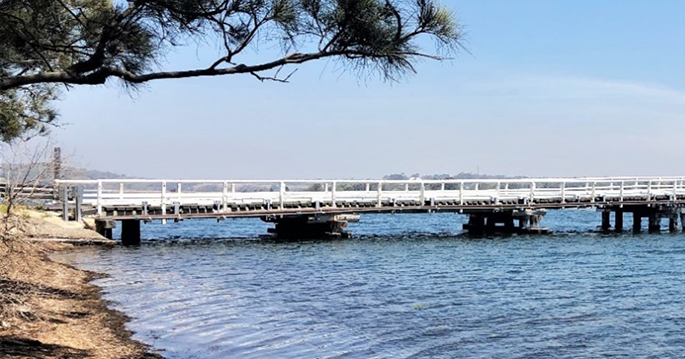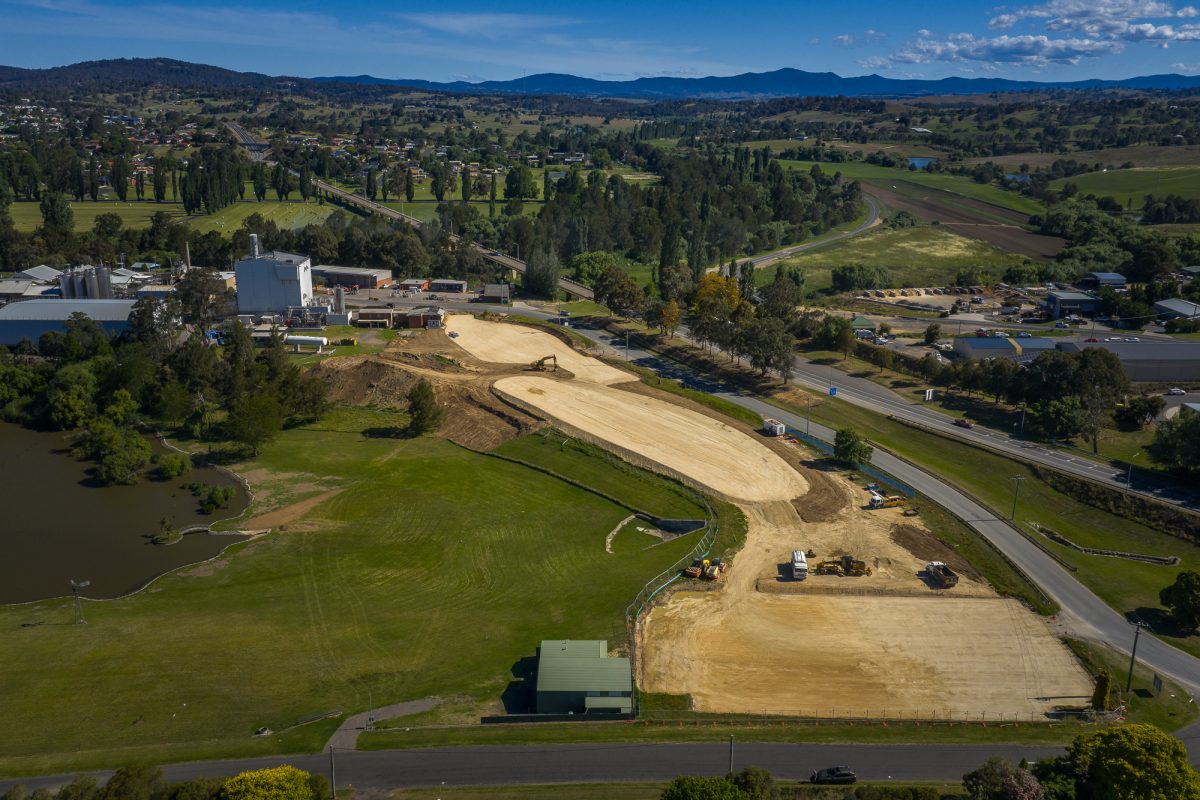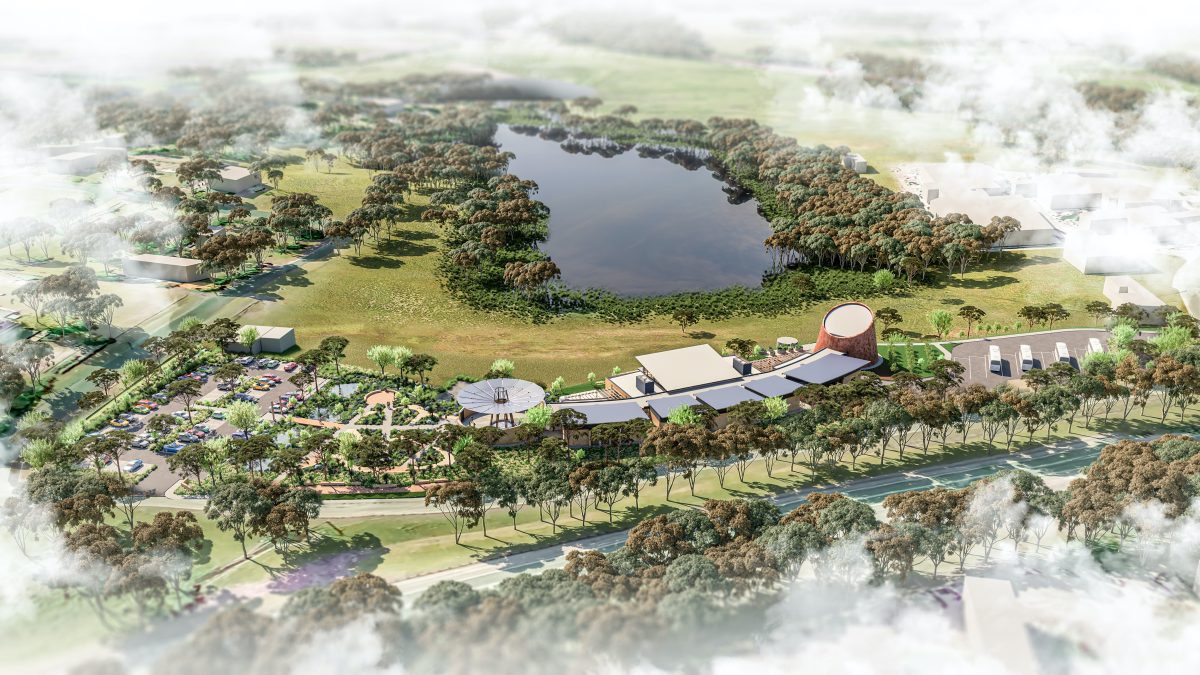
Most of the structural timber being used in the NCC will come from Wallaga Lake Bridge. Photo: Transport for NSW.
Historical Wallaga Lake Bridge was essentially rebuilt in 2024, but a substantial amount of its timber will live on forever in Bega’s National Circularity Centre (NCC).
The project is a beautiful coming together of minds for Andrew Taylor of the Regional Circularity Co-operative, John Turville of Transport for NSW, local builder Leser Build and the passionate Chris Swadling of Ironwood Australia in Taree.
For Mr Taylor, it has been a journey of discovering the many recycled, upcycled and repurposed materials he can incorporate into the NCC.
The building must embody the circularity principle of keeping items and materials in the economy for as long as possible.
As Mr Taylor crossed Wallaga Lake Bridge during its restoration, he thought the timber would be great for the NCC.
“I approached John Turville from TfNSW, who has an environmental and sustainability background, and learnt he had already contracted Chris to replace the bridge timber and take away the old timber to recycle it,” Mr Taylor said. “When I approached Chris, he was very receptive.”
Mr Taylor learnt there is a big business in recycling timber and using glue-laminated (glulam) beams.
Glulam is a way of making big things from little ones.
“In modern times, it is a way of not requiring big trees to be cut down to get big structural beams,” Mr Taylor said.
Most of the structural timber being used in the NCC will come from the bridge, with some being glulam and some being sawn straight from the elements of the bridge. It is a mix of ironbark and spotted gum, some of which date from when the bridge was built in 1894.

An aerial view of the site of the National Circularity Centre in Bega. Photo: David Rogers Photography.
Mr Swadling was on site when Mr Taylor approached Mr Turville.
“We started talking when we were pulling the bridge apart,” Mr Swadling said. “That was when the wheels started in motion, in July 2024.”
Ironwood Australia has the contract to recycle all TfNSW’s timber bridges.
“TfNSW dismantles the bridge, we replace the timber and take the old timber away to recycle it,” Mr Swadling said. “It has to be decontaminated, tested, and then TfNSW assigns a deed of release so we can sell it.”
Not all timber can be recycled, but, conscious of how far it has come, Ironwood Australia uses as much as possible.
It can be a labour of love turning aged timber into “gold” so it can be optimally used in a particular job. That includes taking care of bolt holes to ensure the timber isn’t weakened and retains its structural integrity.
Mr Swadling loves the idea of recycling Wallaga Lake Bridge into Bega’s NCC, given the bridge carried timber and cheese from Bega to Bermagui Harbour and how many people would have travelled over it.
He also loved working on the bridge’s restoration.
“We worked day and night pulling the timber off. As quickly as we did that, they were putting the new timber in,” Mr Swadling said. “It looks good. It matches the landscape.”

Render of the National Circularity Centre. Construction begins in mid-January. Image: Supplied.
NCC’s predominant building materials are rammed earth and timber, supplemented by refabricated, recycled and upcycled materials.
The NCC, along with some Bega Valley community groups, will be using 95 per cent of the materials from the old Bega Cheese Training Centre, which previously occupied the site.
“We have a lot of timber we will be using from that, and the bricks and mortar have been taken to Eden to be crushed and reused,” Mr Taylor said.
He also hopes to use bricks from Stafford’s in Kalaru.
Internally, they may use Saveboard, made from upcycled milk cartons, while second-hand appliances from commercial kitchens and crockery from Vinnies are also on the list.
Mr Taylor is talking with UNSW Scientia Professor Veena Sahajwalla about materials made from recycled glass, plastics and textiles, and to other organisations about 3D-printed plastics. It is all intended to send the circularity message that things need not be brand new.
The goal is full Living Building Accreditation. NCC would be only Australia’s second building with that certification.
Groundworks were completed in mid-November in preparation for construction beginning in mid-January. Completion is expected in mid-2027.
Mr Swadling is ecstatic about being involved in the project. Based on his experience of using timber from 500-year-old Austrian houses, “the timber from Wallaga Lake Bridge will last at the NCC forever”.







